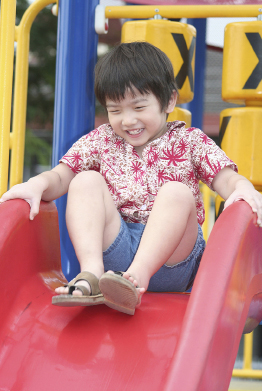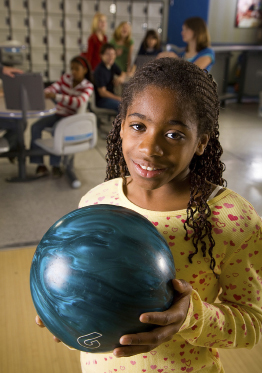Session 1
1. Session 1
1.3. Inquiry 2
Session 1: Physical Development
Inquiry 2: The Role of the Child Care Provider in Children’s Physical Development

© Jane September/iStockphoto
So far in this session you have had opportunities to learn about children’s physical development milestones. As a child care provider, you can use the following strategies to promote children’s physical development:
- Provide a variety of indoor and outdoor activities that promote physical development.
- Model a positive attitude about both indoor and outdoor activities. As a child care provider, be sure to dress appropriately for the weather conditions. For example, in cold weather, wear boots, mittens, a warm jacket, and a hat. If you are not dressed appropriately, you may want to return indoors before the children are ready.
- Be an active role model. Participate in activities and games instead of watching from the side. Being involved helps to keep kids participating in the activity.
- Ensure that the children have at least 30 minutes per day of outdoor play time.
- Maintain appropriate staff-to-child ratios at all times to ensure child safety.
- Ask open-ended questions that lead children to participate in discovering new skills (e.g., How can we get the ball from here to there?).
open-ended question: a type of question that has no right or wrong answer
There are many correct answers to an open-ended question.
- Ensure that the indoor and outdoor gross and fine motor equipment is in good repair and is age-appropriate for the child.
- Consider each child’s ability, interest, culture, and progression of skill before planning and carrying out new activities.
- Provide a variety of games and activities that are interesting and challenging to the children.
- Ensure that activities and games do not leave out some children and that the activities do not encourage children to compete against one another.
- Follow the safety guidelines for each piece of equipment (e.g., age restrictions and the number of children who can safely play on the equipment).
- When using outdoor playgrounds or public parks, ensure that a child care provider inspects the surface area and the equipment for foreign objects that may be dangerous to children.
- Present activities in a way that will be interesting to children.
- Plan music and movement activities every day.
- Balance activities that focus on gross motor skills with activities that focus on fine motor skills.
Environmental Checklist
When planning to develop fine and gross motor skills, ask yourself the following questions:
- Is there adequate space between activities and gross motor equipment for children to move and play?
- Is all equipment in good repair, safe, and age-appropriate for the children using the equipment?
- Are pictures that depict children engaged in physical activity placed around the play space?
- Are there toys and games from other parts of the world? (Use families as resources or investigate at your local library.)
- Is there a variety of materials for gross and fine motor play (e.g., balls and crayons)?
- Are there posted pictures of past field trips or activities that display the children engaged in a gross motor activity (e.g., a visit to a sports centre)?
- Are children aware of rules and safety guidelines for gross motor play (e.g., number of children that can safely play on a structure)?
- Do all cushioned surfaces meet safety requirements?
- Is the outdoor play space free from foreign objects that could cause children harm (e.g., glass)?
Integrating Children with Diverse Abilities into Gross and Fine Motor Activities

© Rich Legg/iStockphoto
Have you ever been excluded? Have you ever seen a child being excluded? As a child care provider, it is critical that you always make sure all children are being included.
Children with physical differences may benefit from the following:
- rhythm and music activities
- sensory motor activities (touch or balance activity)
- perceptual motor activities, such as balance and spatial relationships
- games and activities that require cooperation
- assistance from occupational or physical therapist regarding how best to facilitate movements
- an emphasis on fun rather than on skill or accuracy
- activities that provide rest and relaxation
- adapting equipment when necessary
Children with hearing differences may benefit from the following:
- a communication system such as using hand gestures
- balance activities
- rhythmic activities
- games and activities that require little or no auditory input
- consistent motor routines
- simple stunts and trampoline activities
Children with visual differences may benefit from the following:
- buddy systems during games and activities
- orientation to the equipment and space
- equipment with bright or sharp contrast of colours or raised edges
- consistent motor routines
- auditory cues to signal changes (e.g., whistles or clapping)
- beeper and bell balls to help locate objects
- rhythmic activities
- various types of movements (e.g., slow, fast, hopping, crawling, and so on)
Course Project
How is your strategies box coming along? Are the items and strategies in your box inclusive of children with diverse physical abilities? Now would be a good time to add items and strategies that address the needs of a variety of children to your strategies box.